The Pontiac Vibe was one of the greatest cars to ever bear the badge of a General Motors brand. There’s just so much that’s so right about the Vibe, from its fuel economy and cavernous space, to its impressive reliability. But for a few years, the Vibe wasn’t just one of the most practical hatches on the planet, but an honest-to-goodness hot hatch with a powerplant that would later find a home in a Lotus.
It’s no secret that all of us are fans of the Pontiac Vibe at The Autopian. A couple of years ago, my colleague Thomas Hundal called the Vibe “Very Nearly Flawless.” Earlier this year, I drove an impossibly cheap Vibe during the second-annual Opposite-Lock OppoX, where, in my opinion, the Vibe was easily the second-best rally car on the circuit. It always put down quick times and never suffered from a mechanical failure. It was second only to another GM product, a Saturn Astra, which somehow went even faster.
We’ve even written about hot Vibes, like the sole supercharged Pontiac Vibe GXP show car. I also wrote about the fast and furious Pontiac Vibe GT-R concept. Yet, somehow, we’ve never really given a dedicated piece to the official Vibe hot rod, the GT! It’s time we changed that.

NUMMI
First, let’s set the stage. Here’s what Thomas wrote two years ago:
To understand the Vibe, we must go back to early-1980s California, where malaise at GM’s Fremont plant was running high. As the man in charge of Fremont Union Local 364 at the time, Bruce Lee (no, not that one), told This American Life, “It was considered the worst workforce in the automobile industry in the United States. And it was a reputation that was well-earned.” Ouch. Allegations of working under the influence, gambling on-site, sexual activity while on the clock, and absenteeism plagued the plant, and eventually, GM had enough. In 1982, the automaker fired everyone at Fremont and shut the facility down.
While the Fremont fracas was going on, General Motors wasn’t exactly at the top of the small car game. At the same time that Toyota had Tercel, Corolla, and Camry, GM had Chevette, Cavalier [Editor’s Note: I had a girlfriend with one of these. What a heap. She eventually hit a deer and totaled it, and got a ’70s Dodge Duster as a replacement. It was so much better, and it was also garbage. It was also the only car I ever towed in my Beetle. – JT] , and Citation. It shouldn’t be surprising that shoppers found the reliable, well-built Toyotas more appealing, and in the wake of the oil crisis, Toyota gained significant market share. So much market share, in fact, that the influx of Japanese cars scared the American automakers and government, leading to voluntary import restrictions.

Then came the lightbulb moment: By repurposing the Fremont plant as a joint venture, Toyota could build cars in America to bypass import restrictions without having to build a plant from scratch, and GM could pick up some captive imports while learning all about the Toyota Production System, a lean way of manufacturing that was taking the world by storm. A deal was struck, and a new company was created: The New United Motor Manufacturing Inc., or NUMMI for short.
NUMMI came online in 1984, and much of its workforce were the same workers that were fired in 1982. This time, the sour reputation of Fremont would be vanquished thanks to better management and controls. The excellence of the NUMMI project was demonstrated only two years later when, based on the Consumer Reports Reliability Index, the vehicles coming out of the plant were nearly as good to as good as Toyotas that came from Japan.
NUMMI produced some forgotten cars, like the Toyota-based Chevrolet Nova and Geo Prizm, to some greats like the Toyota Pickup and the Tacoma. But the greatest of them all was arguably the Vibe.
For The ‘Yutes’
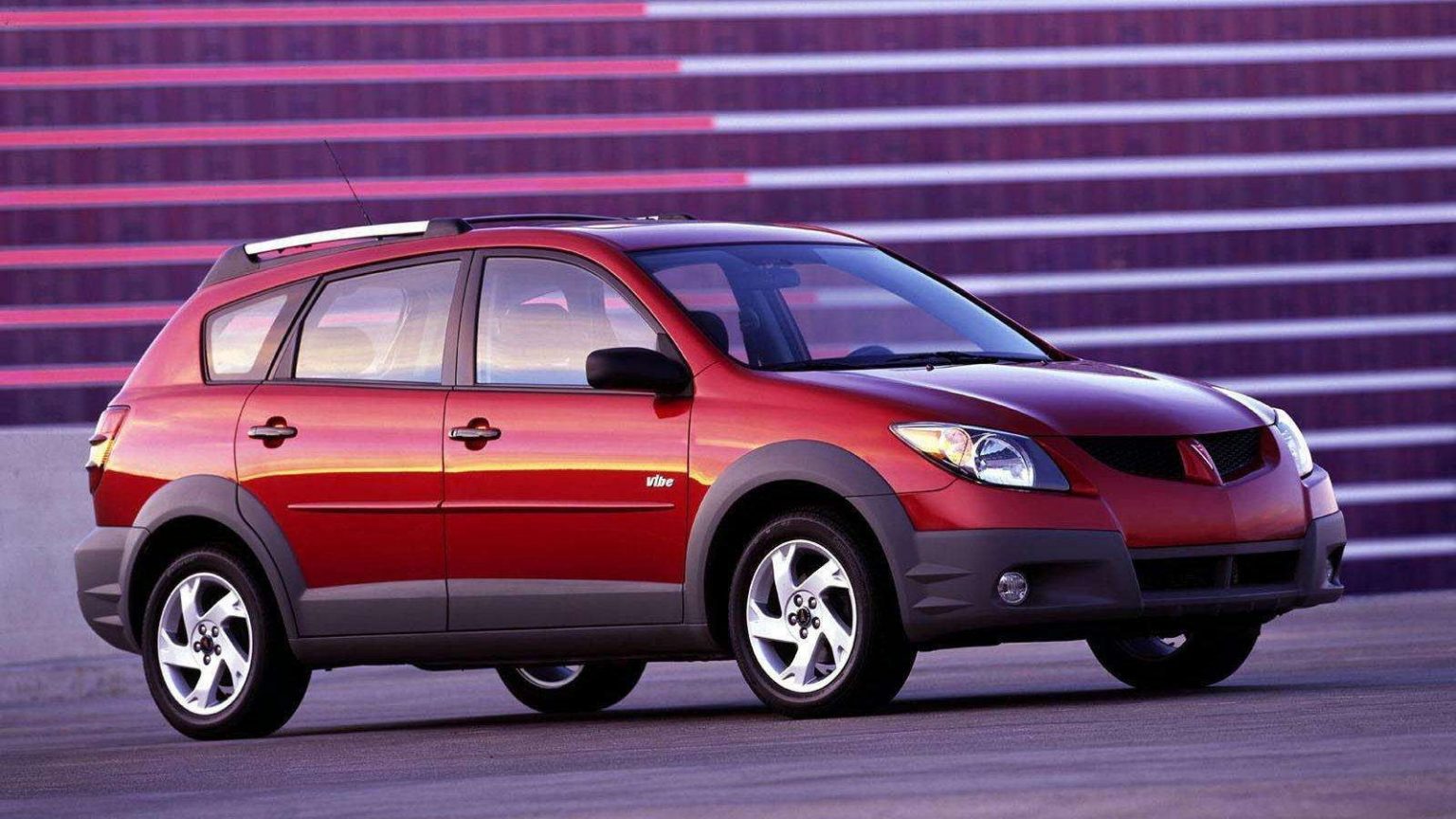
According to Toyota, General Motors proposed the concept of the vehicle that would become known as the Pontiac Vibe. Toyota also says that General Motors also provided the design of the vehicle. Meanwhile, Toyota engineered the Vibe based on GM’s and its own requirements. The idea, of course, was that GM would have something to sell in North America and Toyota had something it could sell back home in Japan.
According to Car and Driver, General Motors and Toyota decided to chase what they thought was a niche with the Vibe and its sister, the Matrix. An archived press release says that the design team started with the goal of creating a car to attract young, active buyers. The automakers saw a demographic of people aged 25 to 35 years old who wanted a utility vehicle, but didn’t particularly care for the ride or size of a truck or SUV. At the same time, the Vibe and the Matrix were not designed to be proper wagons, either. Their roofs aren’t as long as a wagon’s, and the Vibe and Matrix siblings don’t sit as low, either.

As Forbes wrote in 2002, there was a growing segment of crossovers that were smaller than something like the Lexus RX 300 while offering much of the same utility. At the time, this segment was believed to be more of a niche, and NUMMI wanted a slice of it. According to The Car Connection, Toyota went as far as to call the Matrix a “cross-over utility vehicle” and technically considered it a member of its sport utility lineup.
Apparently, when Car and Driver tried to call the Vibe a wagon, GM strongly objected to it, saying that the Vibe was a sport wagon, not a real wagon. This distinction was important because, to GM and Toyota, these cars were not the same as wagons. They sat high off the ground like a utility vehicle, ride and drive like a car, and have some of the storage of a wagon.
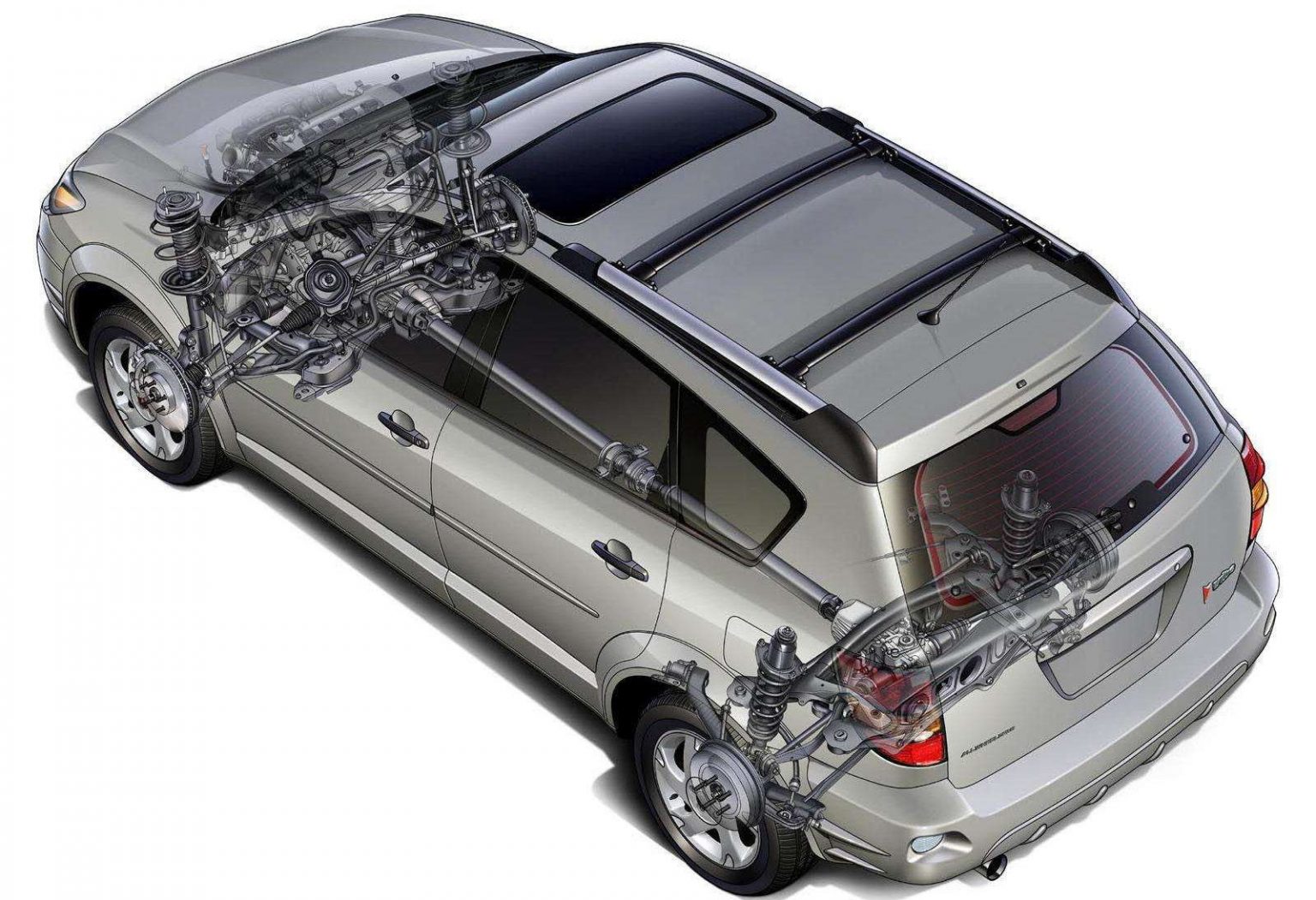
BJ Killeen of Generation Vibe (GenVibe) got to road test a new Vibe at launch and got more of the car’s backstory from GenVibe:
According to John Mack, chief designer, the Vibe was designed to appeal to the buyers because it’s functional, sporty, and affordable. The Vibe features a muscular look, with “tight surfaces” that give it a unique personality. It carries Pontiac’s signature twin-port grille up front, along with short overhangs and an encapsulated C-pillar, which give the Vibe a “hockey stick” look. The Vibe also highlights Pontiac’s trademark wide-track stance, and with the aggressive wheel and tire package, add to its emotional appeal for a performance ride. Cat’s-eye headlights, recessed foglights, and rear cornering lamps round out the exterior appeal. While Pontiac has been known to favor cladding, recent sneak peeks of new models, as well as word from the top, note the trend away from the added panels. Of the three trim levels for the Vibe, only the GT model gets some cladding, and it’s minimal at that. A wise decision for Pontiac if it really wants to bring in younger buyers.
While it’s always good to get as young a buyer as possible into the vehicle to foster brand loyalty, the Vibe’s demographics lean more toward “lifestages” than straight-out demographics. Lifestages are described more as people of any age who are active, adventure-seeking and have a need for a versatile vehicle. And versatile is the key word, here. The objective of the Vibe team was to combine truck and car attributes into one vehicle, and by doing so, provide customers with the ability to do and carry just about anything.
[…]
Before we can talk about power, we have to talk about sharing. For those who don’t know, the Vibe is the sister vehicle to the Toyota Matrix. Developed in a joint venture with Toyota, the Vibe benefits from the association by virtue of the engine selection. The base Vibe comes standard with a DOHC 1.8-liter 16-valve all aluminum four-cylinder engine that sees duty in the Toyota Corolla, as well as the new Matrix. The engine produces 130 horsepower at 6,000 rpm, and 125 lb-ft of torque at 4,200 rpm. The engine features Variable Valve Timing with intelligence (VVTi), which selects the ideal intake and exhaust valve overlap as engine operating conditions vary. VVT-i eliminates the traditional compromises between low-end torque and high-rpm horsepower, as well as enhancing fuel economy and reducing emissions.

The Vibe launched in 2002 for the 2003 model year. The Matrix also hit the road in 2002 for 2003. As Thomas wrote a couple of years ago, the Vibe wasn’t just a hit, but it was one of GM’s and Toyota’s greatest small cars of the early 2000s. Car and Driver summed up its review by calling the Vibe a “winner,” and many publications felt that Pontiac was about to get some new youthful owners into its fray. Autoweek called the Pontiac Vibe the “Most Significant” debut of the 2001 North American International Auto Show in Detroit.
At launch, the Vibe was available in three flavors: Vibe, Vibe GT, and Vibe AWD, which uses a viscous coupling to power the rear wheels. The base engine was a Toyota 1ZZ-FE inline four, good for 130 HP and 125 lb-ft of torque. This engine was also planted in the AWD version, but detuned to 123 HP and 118 lb-ft of torque thanks to exhaust routing. If fun was the name of the game, the GT is where you wanted to go.
Hot Vibes
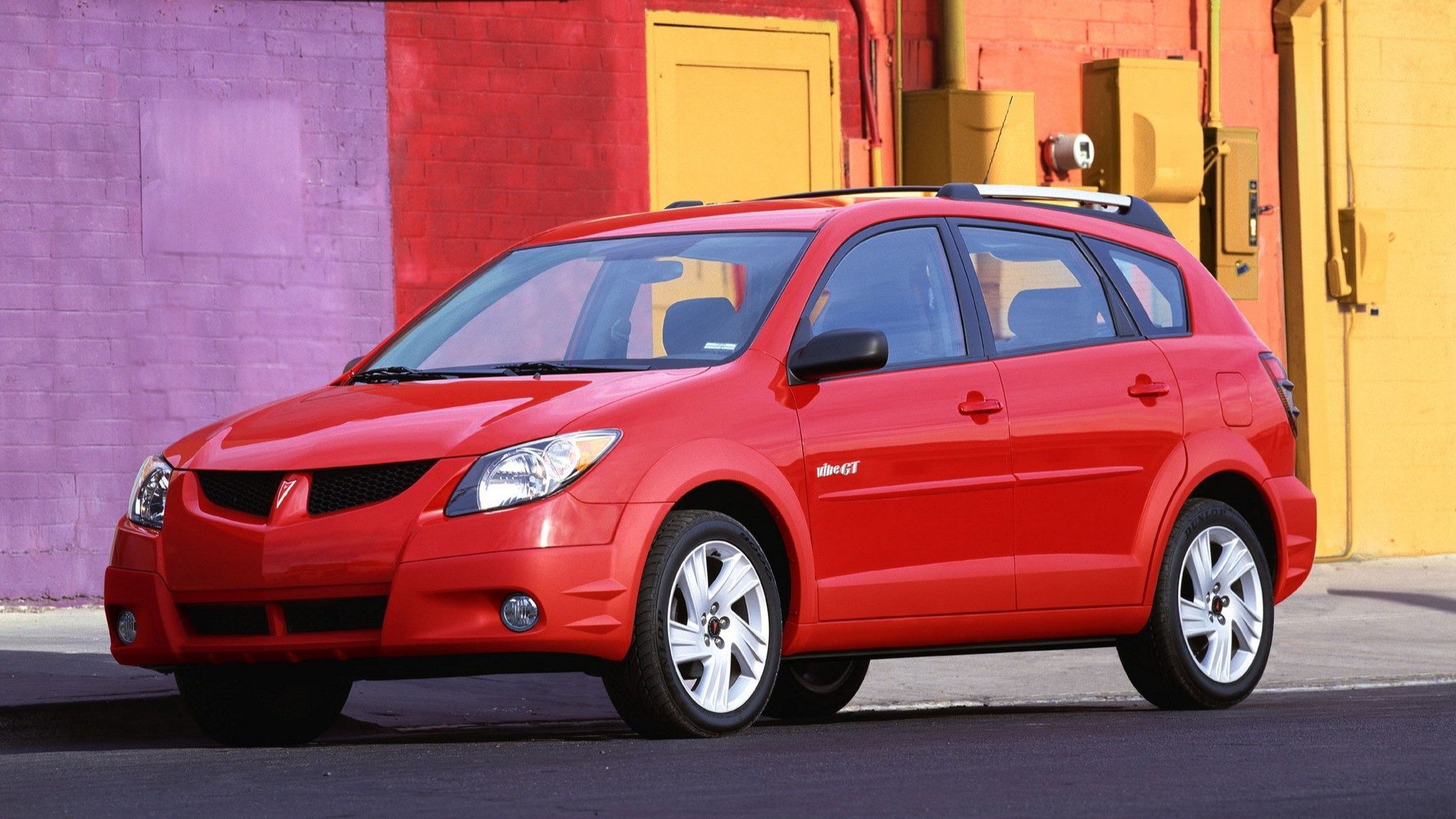
The highlight of the GT model was its powertrain. Under the hood sat Toyota’s now-iconic 2ZZ-GE four that was breathed on by Yamaha. In the Vibe’s early years, this powerplant was good for 180 HP at a sky-high 7,600 RPM, or 1,600 RPM higher than the base engine. Cam switchover happened at 6,000 RPM, and the furious engine raced to a redline of 8,200 RPM. Torque was a hearty 130 lb-ft, and Pontiac was so serious about fun that the GT launched with a six-speed manual as the only transmission choice. You couldn’t even get a manual with the AWD model, and the base model had a five-speed for its manual option.
The GT also came with a factory body kit, a spoiler, 16-inch alloy wheels, and big, sporty fog lights. At 2,800 pounds, the GT wasn’t the lightest car out there, but it wasn’t porky, either. As far as pricing went, at launch, the Vibe was $16,900, the Vibe AWD was $20,100, and the Vibe GT was $19,900.

Automobile Magazine enjoyed the GT’s pep and the Vibe’s overall chassis:
We initially gravitated to the sporty Vibe GT, which replaces the standard 130-horsepower four with a 180-hp, Yamaha-modified engine. The GT rips from 0 to 60 mph in 8.2 seconds, the 1.8-liter shrieking with delight as the variable valve timing engages at 6000 rpm. There’s a mad rush of power from there all the way to the 8400-rpm redline. The torque peak is also sky-high at 6800 rpm, so there’s little action across most of the tach. Climbing a slight grade outside Las Vegas, we had to downshift to fifth in order to maintain a constant 60 mph. Seeking to pass a caravan of motorhomes, we then tried fourth—not much happening there—and finally third. Hello, power band! Goodbye, road toasters.
[…]
The welterweight Vibe also highlights the chassis’s excellent dynamics. The steering has a quick, linear response, and the brakes inspire confidence. The suspension is composed, with minimal body roll, ample grip, and excellent impact damping. Although the Vibe looks like a mini-minivan, it feels lithe and agile. We’d say that it’s more fun to drive than the Chrysler PT Cruiser.

Ultimately, the magazine said the base Vibe was the best balance between accessibility and performance. Super Street Magazine wasn’t super impressed with the performance, but thought the car had a ton of potential:
What becomes immediately apparent while driving the Vibe GT (the performance-enhanced 180hp version), is that this is definitely not a true performance machine. To be honest, we’re not sure what kind of machine it is, since it inhabits that confusing genre of car that tries to meld elements of sports compacts with elements of SUVs. While the GT definitely exhibits signs of life deep into the rpm, heavy helpings of torque seemed to have been left behind somewhere on the planning-room floor. Acceleration and handling don’t give you that tingling in the nether regions that a sports car would, although driving the GT isn’t as cardboard-bland as driving your average SUV. But honestly, if the Vibe holds your interest, it’s probably not true performance you’re after, especially considering that if it were, a vehicle with any kind of SUV pretensions probably isn’t gonna be your first choice.
GM has mentioned the possibility of drivetrain upgrades, but as of now it seems more committed to add-ons of the superficial variety. This isn’t necessarily a bad thing, but it does help make a point: Right now this is a car that has potential if you’re more into show than go. For starters, all the extra room in the Vibe is ideal for some massive stereo and speaker arrangements with plenty of room left over for a couple of Play-Station 2s and a minibar. And stylewise, the Vibe manages to deliver (for the most part)-throw some 18s on one and you might even impress a girl or two. The interior styling is crisp-the centerpiece being the crop-circle gauges in the dash. We do have some minor complaints with the exterior, however-specifically regarding the trademark Pontiac “nostrils” and the cladding (which tends to scream “take me camping” rather than “drive me fast”). But overall the Vibe is impressive, especially when you consider that it originated from Pontiac, father of the (shudder) Aztek.

While GM wasn’t gunning for hot hatches with the GT, it was definitely in the hot category. In 2003, a regular Volkswagen Golf GTI had a 1.8-liter turbo four that made 180 HP, weighed about 3,000 pounds, and hit 50 mph in around 7.5 or 7.7 seconds. On paper, the Vibe and contemporary hot hatches were really close to each other.
Surprisingly, according to some posts on GenVibe, at least some people did cross-shop the Vibe with the Golf. Some folks got the Vibe, and some folks bought both! Others chose their Vibe over something like the Chrysler PT Cruiser. Motor Trend tested the Vibe GT in a shootout against a Volkswagen New Beetle Turbo S and a Mini Cooper S, and the conclusion was that the Vibe felt like a hot hatch until it was pushed too hard.
The best of both worlds might have been buying a Vibe with the base engine, and then equipping it with the factory-supported supercharger upgrade, which pumped 7.5 pounds of boost for 170 HP and 150 lb-ft of torque. GM wasn’t willing to install these superchargers on AWD models because of the strain of the huge torque boost on the AWD components. But, if you’re crazy, there’s nothing stopping you from doing it yourself. Of course, the Matrix got its own version of this supercharger that was branded as a TRD kit.

The Pontiac Vibe would spend most of its lifespan selling in the mid-five figures each year. Sadly, the GT and AWD were killed off in 2007, but returned with the second-gen Vibe in 2008 (model year 2009). It had Toyota underpinnings like the original, but the 2009 GT was weaker than the 170-horsepower original with either a 1.8-liter four good for 132 HP or a 2.4-liter four rated for 158 HP.
In a review, the Grand Forks Herald said that the base 1.8-liter was the better choice because it got better fuel economy and the power difference was negligible, anyway. The journal concluded its review by saying the new Vibe was “nothing exciting, nothing disappointing.” Oof. Then, the Vibe was lost with the rest of Pontiac.
Deeply Underrated
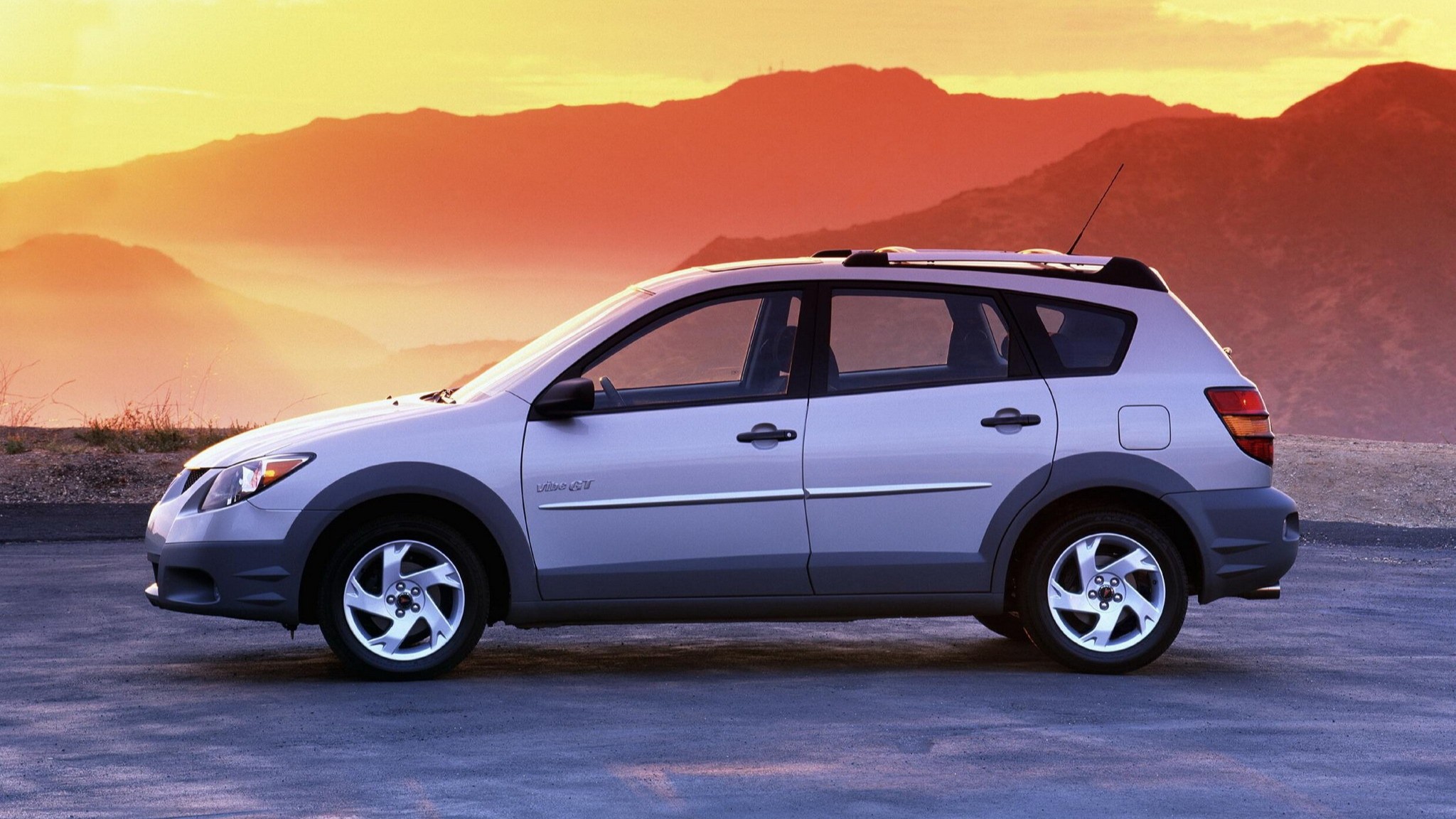
Today, the Vibe GT remains a deeply underrated spicy hatch. The Vibe is insanely reliable, infinitely practical, and still a cheap buy in this world where everything is so expensive. Sure, a Vibe might not have the appeal or handling of a more dedicated sporty hatch, but it’s hard to go wrong. On the plus side, there’s also not a single Vibe out there with more than 299,999 miles! Okay, that one’s a lie, but only because the odometer doesn’t go higher than 299,999 miles.
Personally, I didn’t know just how much I would love the Vibe until I drove the one at OppoX, and, if I recall, that was a $200 car! I’m not saying that I’m going to be in a rush to buy one, but I have a ton of respect for these little cars now. We even have a Vibe expert in our midst. Autopian reader KITT222 is a living encyclopedia on the Vibe and even wrote the Vibe guide over at GenVibe.
So, the next time you’re looking to buy a cheap and fun car, consider a Pontiac Vibe GT. These cars might not look that impressive, but if you’re anything like me, you might be blown away by just how great the Vibe is. This is one of those cars that wasn’t just a GM hit, but a full-on Grand Slam.

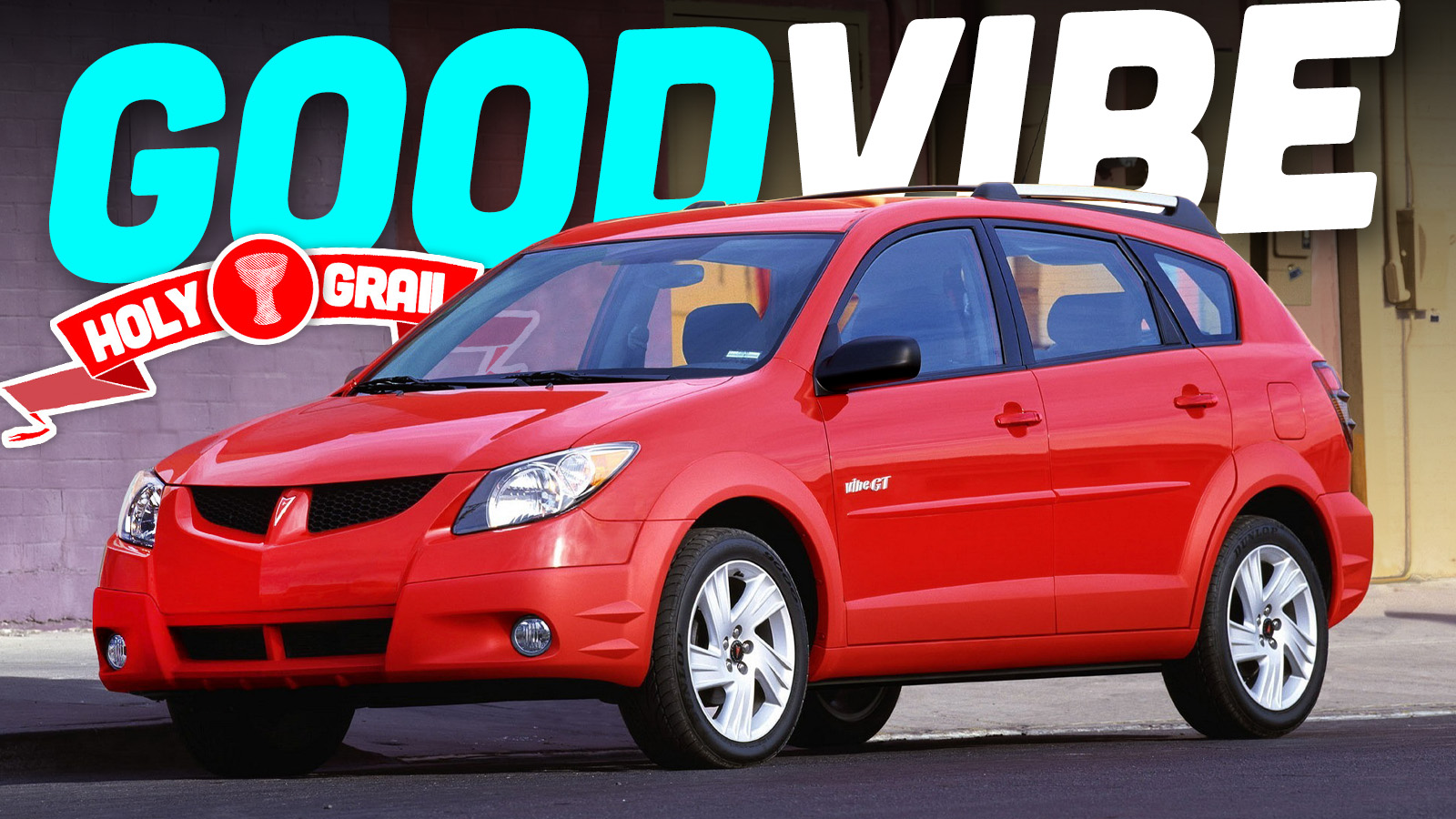



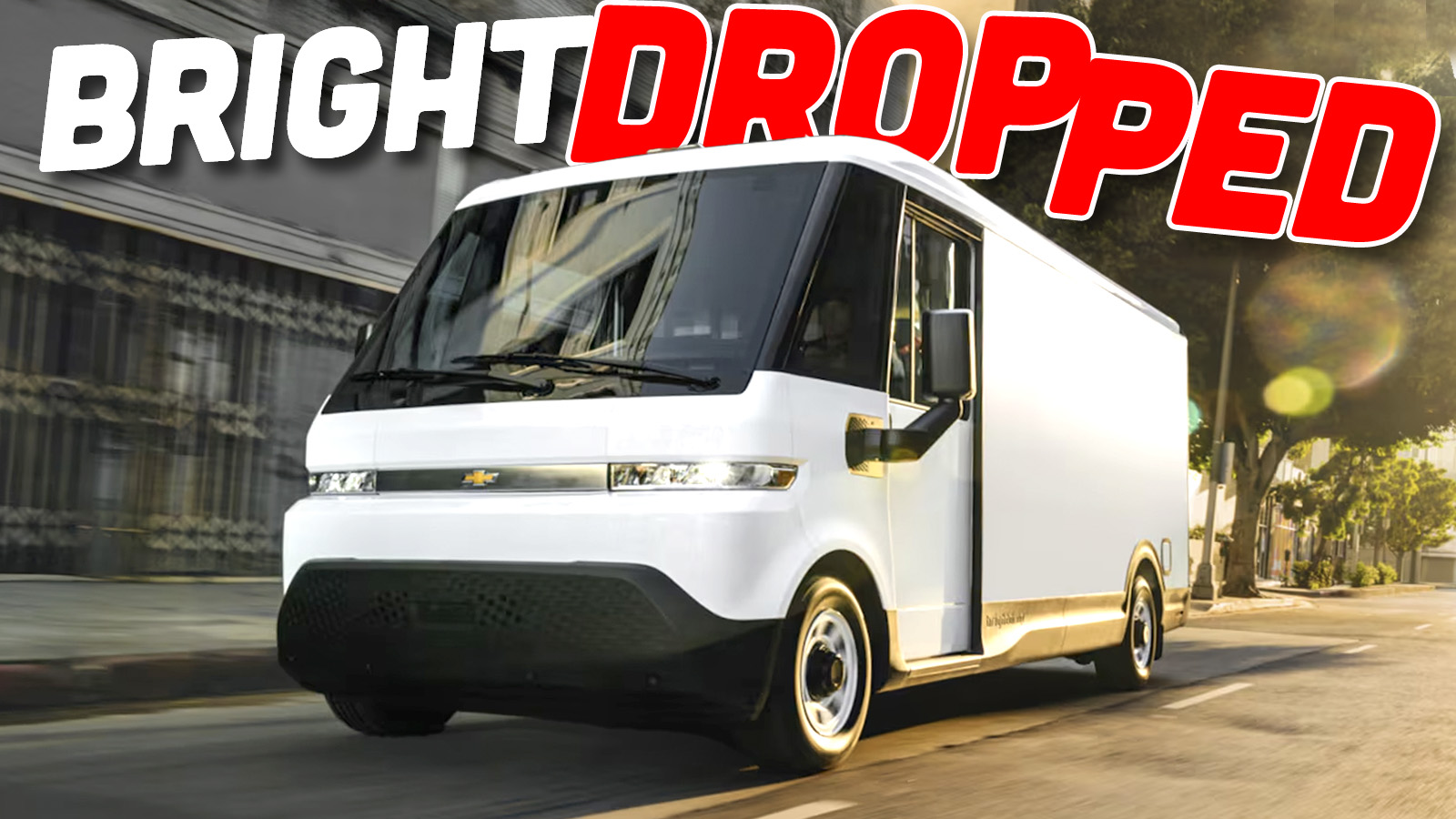


I helped my parents buy a Vibe shortly after my brother and I had moved out to college and they could downsize from a worn out minivan. We had originally been looking for a Toyota matrix but after getting sucked around with by the sales guy there (all the skeezy practices including disappearing with their licenses and not returning them before being threatened), we went to see what was on the GM dealers lot. Sure enough they had a vibe GT just off lease that they let us test drive, and my mom loved the 6 speed and how the engine came on cam aggressively around 6k rpm. That car lasted them 200k miles until a family friend borrowed it, burned out the clutch and overheated it all in one day… Not worth a replacement engine at that point, but that was a fun car at least for spirited street driving and blasting out of infamous with the engine screaming
Counterpoints: it was always ugly, beholden to ill-applied Pontiac styling cues. Bubbly styling, ugly grey cladding, cheap looking in and out.
I will always associate the vibe with ugly wheel covers – at least for the ones that aren’t missing – and seeming, to a unit, to look like they came out of the factory with 80,000 sad grey miles on them, a nicotine haze tinting the windows a smoky white, seats and footwells filled with trash. And no, I’m not thinking of the Aztek.
Back in the early aughts I won a prize in a charity raffle – a day in a convertible, courtesy of the local GM dealer. When I went to collect, they had no convertibles. This was a skeezy dealer that slapped whitewalls, vinyl landaus, and trunk racks on everything on the lot. The oily salesman was trying to talk 20-something me into a Buick, hoping to convert a day’s ride into a sale no doubt, when I saw the miracle: a red Vibe GT on the third row. I’ll take it…
It was a six-speed and just as much of a hoot to hoon as the automotive press said. I took it on a long and spirited road trip, adding 600+ miles to the odo before turning it in the next morning. I think I took it over the 1000-mile mark. The dealer was a little disappointed. Served ‘em right.
I’ve told this story before, but I had a friend years ago who had a Vibe (GT trim, even) with the custom license plate that said “RATOR” on it. Being the immature adult I am, I laughed each and every time I saw it.
Sadly, the Vibe met the fate of so many vehicles in the upper Midwest – being hit by another car sliding on ice.
I had a Vibe as rental for several months and it was the only car that I’ve ever driven that nearly rolled over on me. I was coming around a sweeping curve at 40 mph and had the brake for a traffic light. I was not braking that hard and even going faster than the speed limit for the road and I swear to god two wheels came off the road. It was terrifying.
I was the target audience when these came out. At the time I thought they were over-styled, and trying too hard -much like the brethren Aztek.
I’d have rather had the Matrix, because at least taking it to a Toyota dealership they’d be familiar with the engine. Gm dealership techs around here tend to recoil in horror at anything that doesn’t use a clattering pushrod for the valve movement. They’re the same ones that have the mindset that Saturn was an import brand, despite being a GM vehicle made for the US.
I was very close to buying a very similar car when it was new (and even after it stopped production): the Suzuki SX4. MUCH nicer styling (styling by Giugiaro, in fact!) – neither overly aggressive like the vibe nor blobby like the Matrix (really they should have badged the vehicles as the other, as the rounded Mateix would have looked more at home with the grand am and grand prix of its era than the vibe did). Good AWD system, easy to work on engine, tall roofline, came with a manual transmission option, and available as either the “Crossover” offroad-ready-looking variant, or more urban-focused “Sportback” variant later on. Alas, I didn’t pull the trigger. I’d probably have owned fewer cars in the same time span, but I couldn’t trust my finances at that age (wise decision) to guarantee a consistent car payment for 3 or so years.
A friend had the regular Matrix and really liked it, though he thought my Mazda3 was better, but didn’t want to buy the same car. The Mazda probably was better to drive at least, but that’s kind of faint praise and I think that’s canceled out by not having the rot issue of the Mazda. He was pissed when it was totaled as he couldn’t buy another and there wasn’t anything that was as practical, compact, reliable, efficient, and not terrible to drive. He ended up in a Ford C-Max that he hated. I think the more basic spec is the better choice as it’s bulletproof and more economical, but I hate torque-deficient engines like the 2ZZ-GE, especially in a daily schlepper, so YMMV.
Two friends who are definitely not car people. One had a Vibe and the other had an Element. Cars have been gone for years but they still talk about them.
Are we in the Matrix now? Who’s cat is that?
“we must go back to early-1980s California, where malaise at GM’s Fremont plant was running high.”
Can confirm. Lived in Fremont and my friends dad was the west coast manufacturing manager for GM. He said that the further west you got, the worse the GM facility. Van Nuys was always the worst, but Fremont was a close second. When the plant shut down, most employees moved to remain with GM. As I recall, most went to Missouri. I think the NUMMI work force was less than 30% returning employees.
A good friend of mine had a manual Vibe GT which got totaled and I remember him fighting with the insurance company because they gave him a pretty meager payout and he couldn’t find any comparable manual GTs for the amount he was getting. He found some similar vehicles for sale and actually got them to pay out more specifically because they were GTs.
What I wouldn’t give for these cars to still be in production with modern safety features.
Does the Corolla iM count? Or a Mazda CX-30? The CH-R could also arguably apply.
I am surprised at how many of these I see on the road.
I love the fact that Toyota Rebadged the Matrix into the Vibe, and then rebadge the Vibe back into a Toyota (Toyota Voltz).
I owned two Toyota Matrixes (Matri?), both XR trim, both with a manual transmission, for a total of 10 years. I was bummed they discontinued it.
I remember when I had my last one in for service and salesman showed me CH-R as the ‘exciting’ new alternative.
It was an incredibly practical car that 4 average adults could actually sit in comfortably, which I don’t think can be said about the current Corolla hatchback.
Matrices.
NUMMI is now the Fremont Tesla factory.
That says it all, doesn’t it?
Two Decades Ago, Pontiac Sold A
Seriously Underratedrebadge Toyota Hot HatchWith A Spicy Toyota EngineThese were basically all Toyota and were always well regarded. I remember trying to find one used when they were less than 3 years old, and they demanded a significant premium. They were wonderful cars. My parents had two non-GT versions for many years and loved them.
Usually the Vibe came with a discount next to the Toyota equivalent when you shopped them used.
And GM cash on the hood when buying new.
I didn’t realize it was already Pontiac Pthursday.
Wait…
Damnit. Still Wednesday.
Crap!
Bad news, buddy.
Autopian is a worldly gathering, so it’s possible Otto has reached Wednesday?
I had the same thought…damn this week flew by, but nope. On vacation next week, so ready for this week to be done.
The Bishop has handed me the keys to Pontiac shenanigans this week! I have an interesting choice for Pthursday. 🙂
Toyota (in disguise) Tuesday?